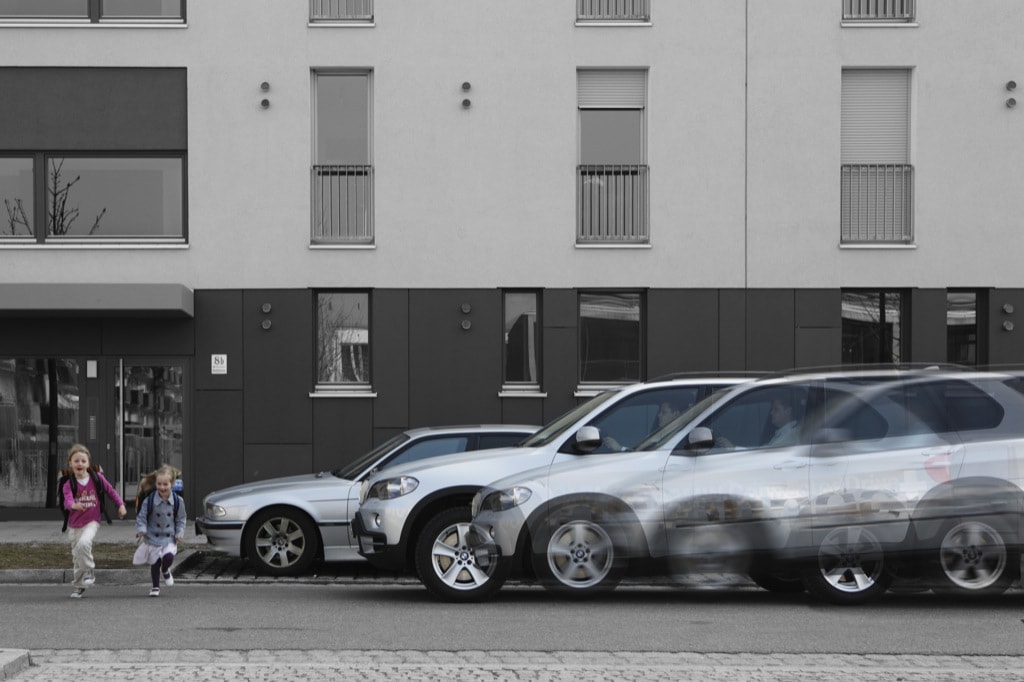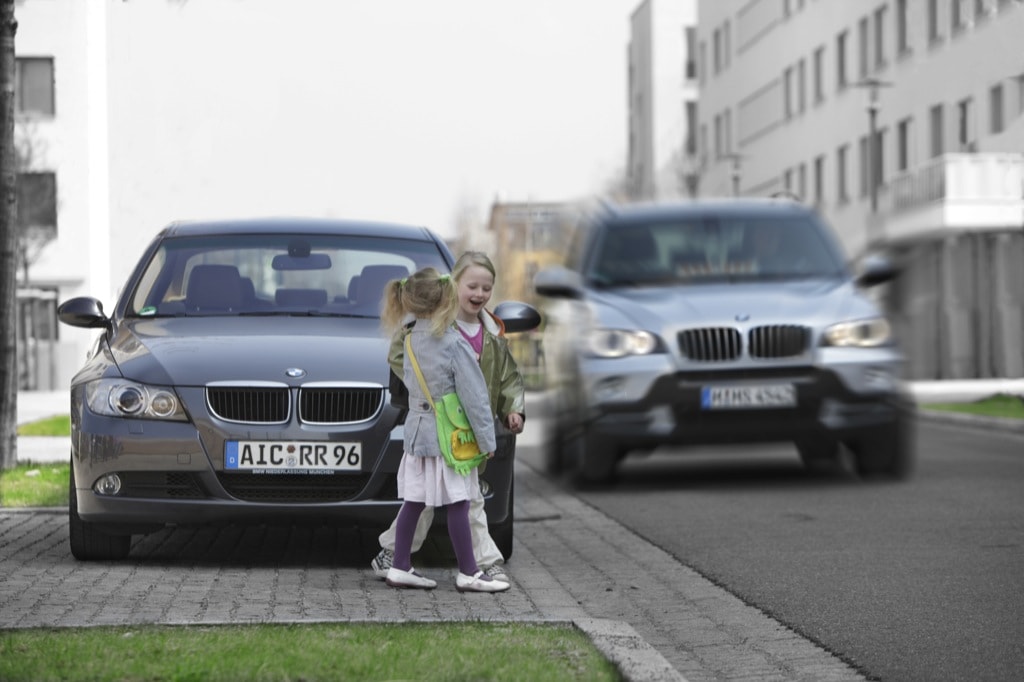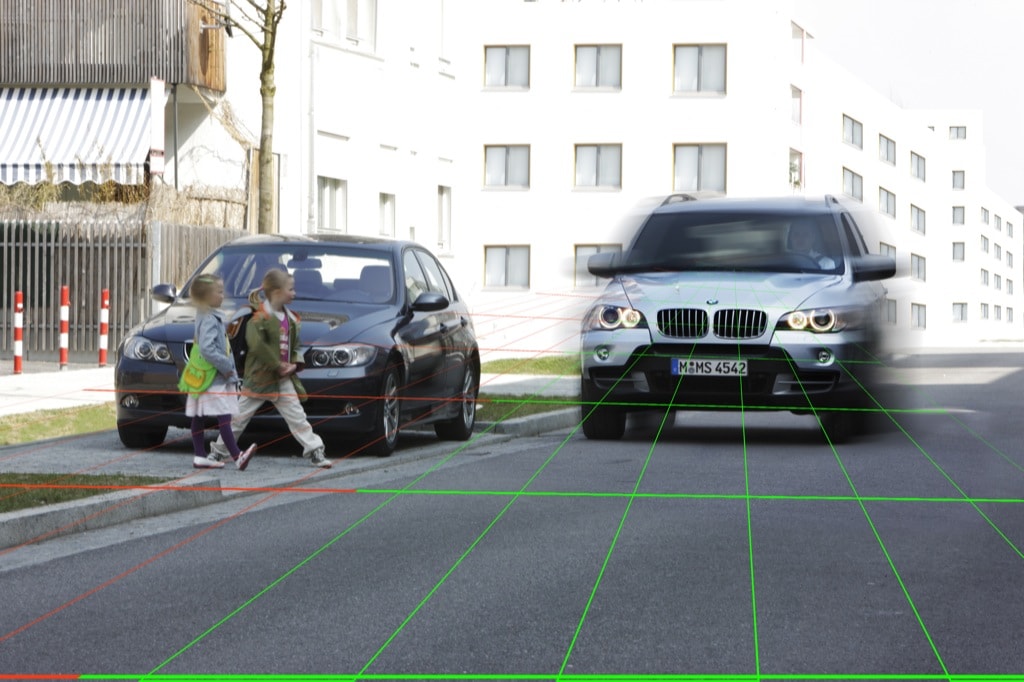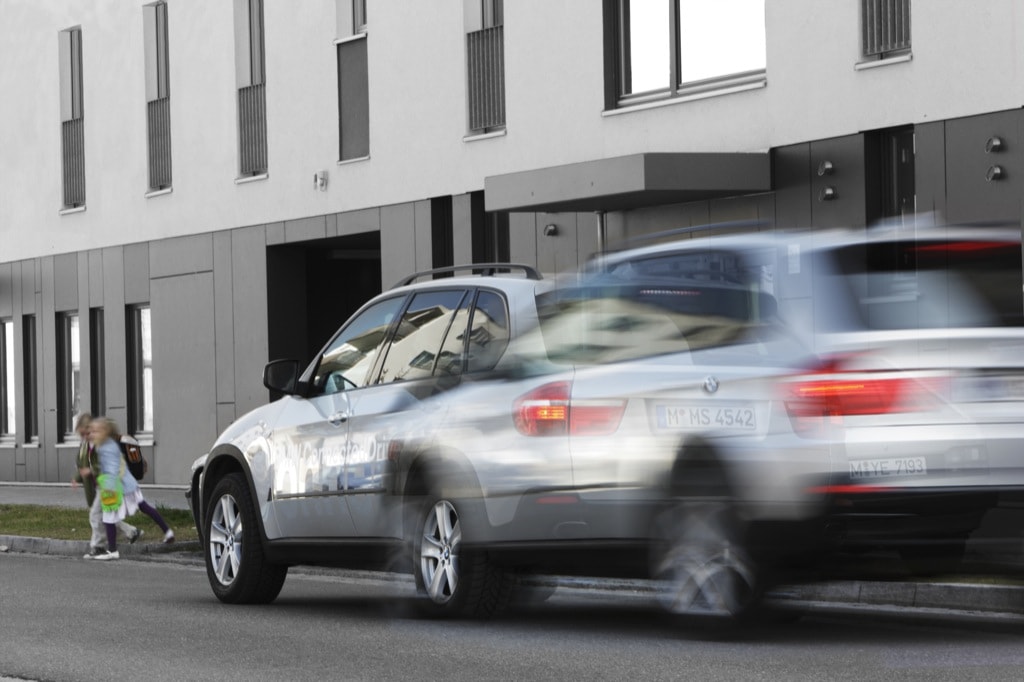Safety is undoubtedly one of the areas in which a car cannot become perfect, as damages, injuries and passenger protection depend on a huge number of factors. However, car manufacturers around the world do not stop to focus their efforts on improving the existing technologies or even develop new projects that could enhance car passenger safety.
Such an idea comes from the German automaker BMW, who recently presented the so-called Car-2-X Communication system. Although it could prove to be very efficient indeed, as far as we're concerned is fairly impossible to see the technology mass produced, let's say in the next 10 years, mostly due to the high cost and resources it would require.
Before explaining the way it works, let us tell you its role. Just like its name suggests, it establishes a communication connection between a car and a different unit, in our case, pedestrians. The system is particularly aimed at protecting pedestrians and avoid, as much as possible, an accident.
Car-2-X Communication is based on the AMULETT research project - which is the German acronym for “Active mobile accident avoidance and mitigation of accident effects through cooperative data acquisition and tracking technology”.
Although it may look a bit too complex, the whole system is based on three main parts: a radio transponder carried by a pedestrian, vehicle sensors and the car per se. Basically, the transponder sends data regarding the position of the carrier to the car using the sensors, allowing the driver to better know the position of a pedestrian even if he's hidden after a parked vehicle or other obstacles. Even if a child steps in the front of a moving car from between two other parked vehicles, the driver is ready to react and avoid as much as possible the impact.
Specifically, a vehicle equipped with the Car-2-X system sends an impulse to the transponder which, in its turn, answers with an identification message - note that the device generates a random code to prevent it from being linked with the same car. Using the received data - such as the traveling time of the radio signal - the system automatically calculates the distance between the pedestrian and the vehicle and identifies his position. The system works with electromagnetic waves on a frequency bad of 2.4 GHz.
Depending on a number of factors, it could determine whether the situation could end in a collision. In this case, it automatically sends a warning to the driver, giving him extra time to react. Additionally, future versions could also brake the car or trigger other measures in an attempt to avoid the accident.
BMW says such a system could prevent lots of fatal accidents as the portable devices could be easily integrated in mobile phones or even walking stick for blind people. To give you an idea, figures provided by the Germany's Federal Statistical Office, 48 percent of accidents victims that occurred in 2006 and aged between 6 and 14 ran out into the road without looking for approaching vehicles. Furthermore, 25 percent of the accidents involved children who stepped onto the road from behind a near obstacle, making it impossible for the drivers to avoid the collision.
The development of the project took no less than three years and was funded by Germany's State Ministry for Economic Affairs, Infrastructure, Transport and Technology. Beside BMW, the system was designed and tested with the help of several other companies or groups, including Continental Safety Engineering International GmbH, the Fraunhofer Institute for Integrated Circuits, the Institute for High Frequency Engineering at Munich’s Technical University, and ZENTEC GmbH.
Such an idea comes from the German automaker BMW, who recently presented the so-called Car-2-X Communication system. Although it could prove to be very efficient indeed, as far as we're concerned is fairly impossible to see the technology mass produced, let's say in the next 10 years, mostly due to the high cost and resources it would require.
Before explaining the way it works, let us tell you its role. Just like its name suggests, it establishes a communication connection between a car and a different unit, in our case, pedestrians. The system is particularly aimed at protecting pedestrians and avoid, as much as possible, an accident.
Car-2-X Communication is based on the AMULETT research project - which is the German acronym for “Active mobile accident avoidance and mitigation of accident effects through cooperative data acquisition and tracking technology”.
Although it may look a bit too complex, the whole system is based on three main parts: a radio transponder carried by a pedestrian, vehicle sensors and the car per se. Basically, the transponder sends data regarding the position of the carrier to the car using the sensors, allowing the driver to better know the position of a pedestrian even if he's hidden after a parked vehicle or other obstacles. Even if a child steps in the front of a moving car from between two other parked vehicles, the driver is ready to react and avoid as much as possible the impact.
Specifically, a vehicle equipped with the Car-2-X system sends an impulse to the transponder which, in its turn, answers with an identification message - note that the device generates a random code to prevent it from being linked with the same car. Using the received data - such as the traveling time of the radio signal - the system automatically calculates the distance between the pedestrian and the vehicle and identifies his position. The system works with electromagnetic waves on a frequency bad of 2.4 GHz.
Depending on a number of factors, it could determine whether the situation could end in a collision. In this case, it automatically sends a warning to the driver, giving him extra time to react. Additionally, future versions could also brake the car or trigger other measures in an attempt to avoid the accident.
BMW says such a system could prevent lots of fatal accidents as the portable devices could be easily integrated in mobile phones or even walking stick for blind people. To give you an idea, figures provided by the Germany's Federal Statistical Office, 48 percent of accidents victims that occurred in 2006 and aged between 6 and 14 ran out into the road without looking for approaching vehicles. Furthermore, 25 percent of the accidents involved children who stepped onto the road from behind a near obstacle, making it impossible for the drivers to avoid the collision.
The development of the project took no less than three years and was funded by Germany's State Ministry for Economic Affairs, Infrastructure, Transport and Technology. Beside BMW, the system was designed and tested with the help of several other companies or groups, including Continental Safety Engineering International GmbH, the Fraunhofer Institute for Integrated Circuits, the Institute for High Frequency Engineering at Munich’s Technical University, and ZENTEC GmbH.





